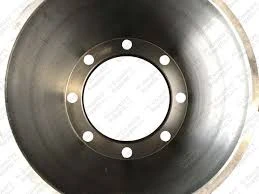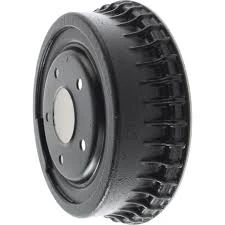
-
 Afrikaans
Afrikaans -
 Albanian
Albanian -
 Amharic
Amharic -
 Arabic
Arabic -
 Armenian
Armenian -
 Azerbaijani
Azerbaijani -
 Basque
Basque -
 Belarusian
Belarusian -
 Bengali
Bengali -
 Bosnian
Bosnian -
 Bulgarian
Bulgarian -
 Catalan
Catalan -
 Cebuano
Cebuano -
 Corsican
Corsican -
 Croatian
Croatian -
 Czech
Czech -
 Danish
Danish -
 Dutch
Dutch -
 English
English -
 Esperanto
Esperanto -
 Estonian
Estonian -
 Finnish
Finnish -
 French
French -
 Frisian
Frisian -
 Galician
Galician -
 Georgian
Georgian -
 German
German -
 Greek
Greek -
 Gujarati
Gujarati -
 Haitian Creole
Haitian Creole -
 hausa
hausa -
 hawaiian
hawaiian -
 Hebrew
Hebrew -
 Hindi
Hindi -
 Miao
Miao -
 Hungarian
Hungarian -
 Icelandic
Icelandic -
 igbo
igbo -
 Indonesian
Indonesian -
 irish
irish -
 Italian
Italian -
 Japanese
Japanese -
 Javanese
Javanese -
 Kannada
Kannada -
 kazakh
kazakh -
 Khmer
Khmer -
 Rwandese
Rwandese -
 Korean
Korean -
 Kurdish
Kurdish -
 Kyrgyz
Kyrgyz -
 Lao
Lao -
 Latin
Latin -
 Latvian
Latvian -
 Lithuanian
Lithuanian -
 Luxembourgish
Luxembourgish -
 Macedonian
Macedonian -
 Malgashi
Malgashi -
 Malay
Malay -
 Malayalam
Malayalam -
 Maltese
Maltese -
 Maori
Maori -
 Marathi
Marathi -
 Mongolian
Mongolian -
 Myanmar
Myanmar -
 Nepali
Nepali -
 Norwegian
Norwegian -
 Norwegian
Norwegian -
 Occitan
Occitan -
 Pashto
Pashto -
 Persian
Persian -
 Polish
Polish -
 Portuguese
Portuguese -
 Punjabi
Punjabi -
 Romanian
Romanian -
 Russian
Russian -
 Samoan
Samoan -
 Scottish Gaelic
Scottish Gaelic -
 Serbian
Serbian -
 Sesotho
Sesotho -
 Shona
Shona -
 Sindhi
Sindhi -
 Sinhala
Sinhala -
 Slovak
Slovak -
 Slovenian
Slovenian -
 Somali
Somali -
 Spanish
Spanish -
 Sundanese
Sundanese -
 Swahili
Swahili -
 Swedish
Swedish -
 Tagalog
Tagalog -
 Tajik
Tajik -
 Tamil
Tamil -
 Tatar
Tatar -
 Telugu
Telugu -
 Thai
Thai -
 Turkish
Turkish -
 Turkmen
Turkmen -
 Ukrainian
Ukrainian -
 Urdu
Urdu -
 Uighur
Uighur -
 Uzbek
Uzbek -
 Vietnamese
Vietnamese -
 Welsh
Welsh -
 Bantu
Bantu -
 Yiddish
Yiddish -
 Yoruba
Yoruba -
 Zulu
Zulu
Feb . 07, 2025 01:09
Back to list
drum brake cylinder replacement
Replacing the drum brake cylinder is a task that demands attention to detail, technical expertise, and a commitment to safety. This component, essential for the effective operation of drum brakes, plays a pivotal role in maintaining your vehicle's braking performance. When it fails, addressing the problem promptly is crucial to ensure road safety and vehicle longevity.
Installing the new drum brake cylinder must be carried out with precision. Ensuring that the new component matches the specifications of the old cylinder is vital to maintain the vehicle's designed performance quality. Secure the new cylinder in its position, reattach the brake line, and inspect for any potential leaks. After assembly, thorough bleeding of the brake system is required to remove any air that may have entered during the replacement. This process underscores the significance of expertise and precision. A professional with authoritative knowledge not only knows how to replace the cylinder but understands the necessity of using high-quality parts that meet manufacturer specifications. Original Equipment Manufacturer (OEM) parts are usually recommended for their reliability and compatibility, offering peace of mind that aftermarket alternatives might not. Trustworthiness in brake cylinder replacement can be enhanced by transparent communication with clients about their vehicle's condition, the steps involved in the repair, and any potential issues that could arise. Demonstrating a commitment to safety and customer service builds a reputation for reliability that customers value. In conclusion, drum brake cylinder replacement embodies a blend of expertise, careful planning, and quality execution. Those considering this repair should seek professionals who uphold the highest standards in brake repair service, ensuring safety in every mile driven thereafter. By focusing on these core principles, the task not only keeps vehicles safely on the road but also emphasizes the professionalism and trustworthiness characteristic of top-tier automotive specialists.


Installing the new drum brake cylinder must be carried out with precision. Ensuring that the new component matches the specifications of the old cylinder is vital to maintain the vehicle's designed performance quality. Secure the new cylinder in its position, reattach the brake line, and inspect for any potential leaks. After assembly, thorough bleeding of the brake system is required to remove any air that may have entered during the replacement. This process underscores the significance of expertise and precision. A professional with authoritative knowledge not only knows how to replace the cylinder but understands the necessity of using high-quality parts that meet manufacturer specifications. Original Equipment Manufacturer (OEM) parts are usually recommended for their reliability and compatibility, offering peace of mind that aftermarket alternatives might not. Trustworthiness in brake cylinder replacement can be enhanced by transparent communication with clients about their vehicle's condition, the steps involved in the repair, and any potential issues that could arise. Demonstrating a commitment to safety and customer service builds a reputation for reliability that customers value. In conclusion, drum brake cylinder replacement embodies a blend of expertise, careful planning, and quality execution. Those considering this repair should seek professionals who uphold the highest standards in brake repair service, ensuring safety in every mile driven thereafter. By focusing on these core principles, the task not only keeps vehicles safely on the road but also emphasizes the professionalism and trustworthiness characteristic of top-tier automotive specialists.
Latest news
-
What Are Drum BrakesNewsJul.07,2025
-
Understanding Brake Drum MaterialNewsJul.07,2025
-
Semi-Trailer Brake Drum: A Key Component for Extreme Loads and Long-Distance TransportNewsJul.07,2025
-
Drum Brake Pads for SaleNewsJul.07,2025
-
Brake Drums for SaleNewsJul.07,2025
-
Brake Drum ManufacturerNewsJul.07,2025
-
Aluminum Brake Drums: The Future of High-Performance CarsNewsJul.07,2025
